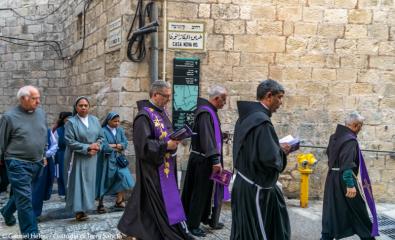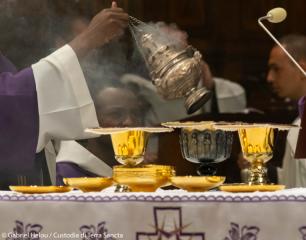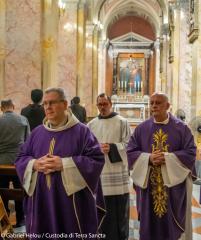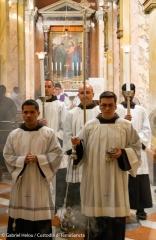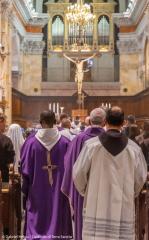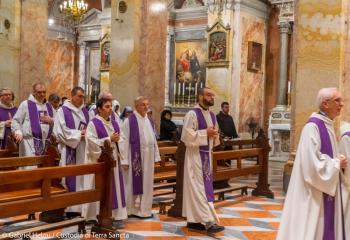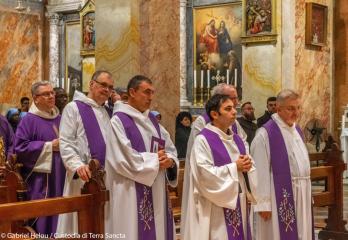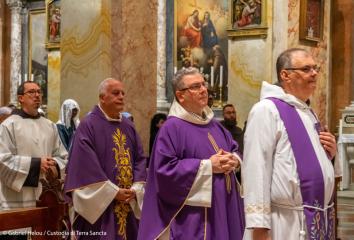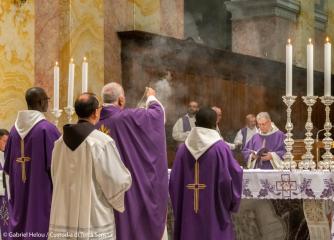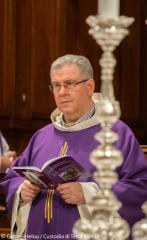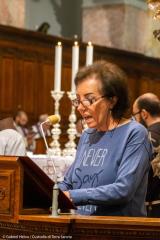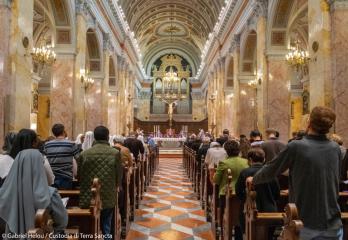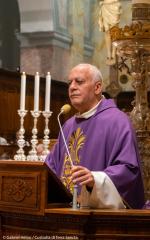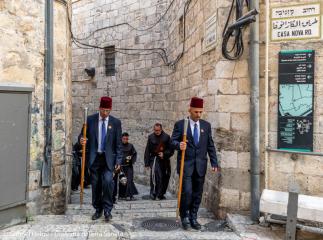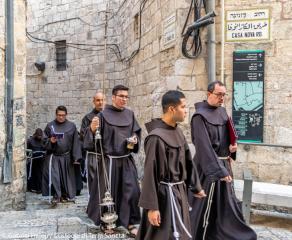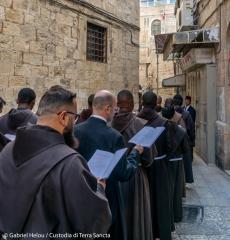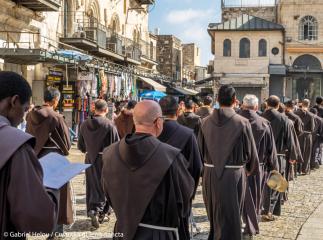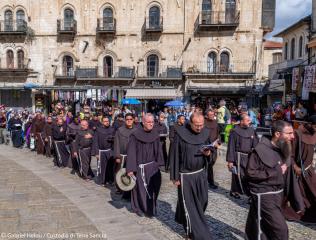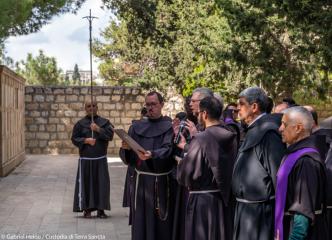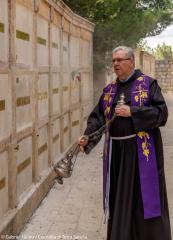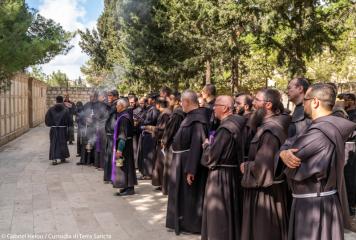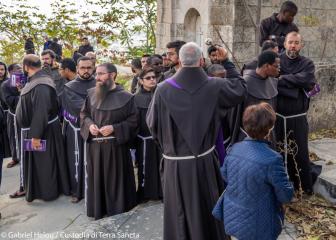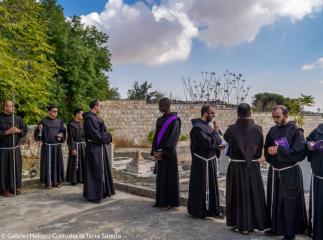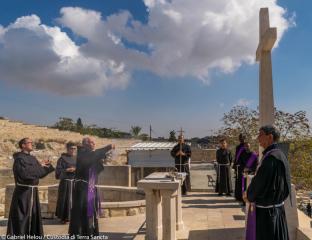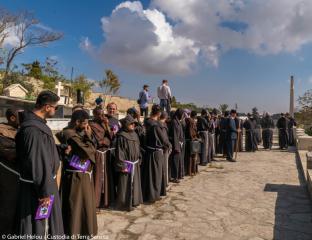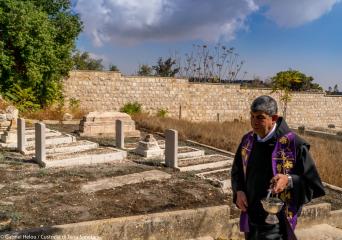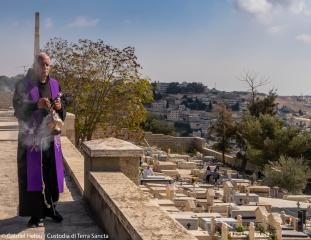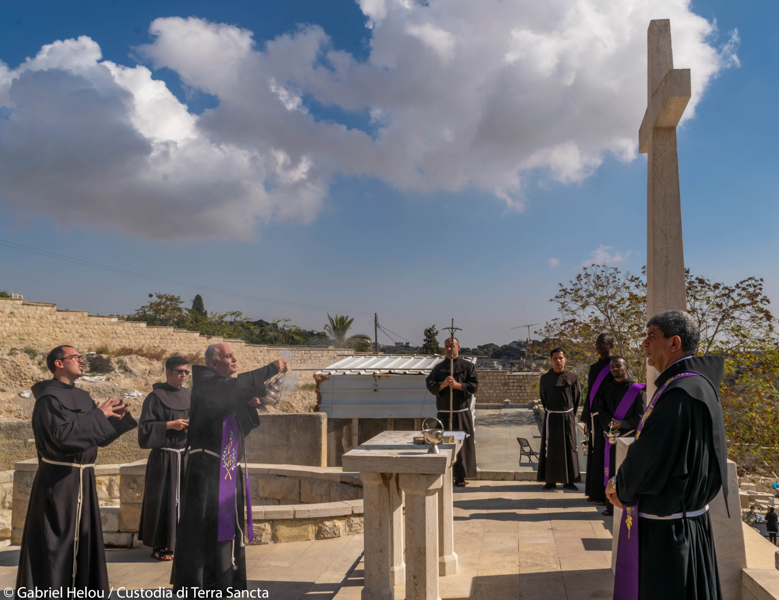
On 2nd November the Franciscan community of Jerusalem took part in the Commemoration of the all the Faithful Departed, which for years has been attended by the many faithful of the parish of St Saviour, joined by religious, pilgrims and faithful present in the Holy City to remember their loved ones on this special day of prayer and spiritual communion with the deceased.
As tradition has it, in Jerusalem there are two distinct parts in the course of the morning: the Eucharistic celebration in Arabic at St Saviour’s church and immediately afterwards the visit to the three cemeteries of Mount Sion, where the tombs are blessed, with a long procession which winds through the streets of the Old City to the Franciscan cemetery, the foreigners’ cemetery and that of the Jerusalemites.
The solemn mass, presided by the parish priest fr. Amjad Sabbara, with the Father Custos fr. Francesco Patton and his vicar fr. Ibrahim Faltas as main concelebrants, was attended by a number of priests and religious from the other communities in the city.
“Particularly on this day,” Fr. Amjad Sabbara emphasized in the homily, “we always have to remember the words of Jesus when he said, “I am the resurrection and the life; those who believe in me, even if they die, will live”: to take part in this resurrection we have to believe in Him and make our lives a continuous journey towards the Lord. We know that the life of the man who lives with Christ is projected towards eternal life.”
“The Lord created us not to die, but to live,” Fr. Amjad continues and when he said “He who eats my flesh and drinks my blood has eternal life and I will raise him on the last day,” he reminds us that it is in the sacrament of the Eucharist that we become similar to Him, to rise with Him. But to become similar to Him, we also have to follow his behaviour during His earthly life: this means that we have to help our neighbour, lighten the burdens of the people who are close to us, because it is in lifting the burden that during this life we can find joy, until the greatest joy comes about, the transfer from this world, when death becomes “Sister Dearth” (as St Francis calls it), a sister who opens the door so that we can at last see face to face the one in whom we have placed our hope.”
The visit to the cemeteries
From the church of St Saviour, at the end of the mass, the friars of the Custody of the Holy Land, preceded by the Kawas, went through the streets of the Old City of Jerusalem in a solemn procession with singing and prayers, to reach Mount Sion. The first cemetery to be visited was the Franciscan one, where a moment of prayer was held, followed by the blessing, the incensing of the tombs and sprinkling of holy water. The same rite took place in the two other Arab Christian cemeteries: the older one, which still bears the signs of the 1948 bombing, and the more recent one, which looks on to the western part of Jerusalem, where there were already numerous local Christians visiting the graves of their loved ones, to leave a flower or a lit candle.
“Especially here, at the cemetery of Sion,” Fr. Amjad Sabbara recalled again, “we must always look at these tombs with our eyes on the Holy Sepulchre, where there is an empty tomb, because it is there that the resurrection of Jesus took place, a living sign of our faith. We are here to bless these tombs and live the memory of our dear ones who have died but remain alive in our lives, and with our prayer we ask the Lord to grant them eternal life.”
Silvia Giuliano


